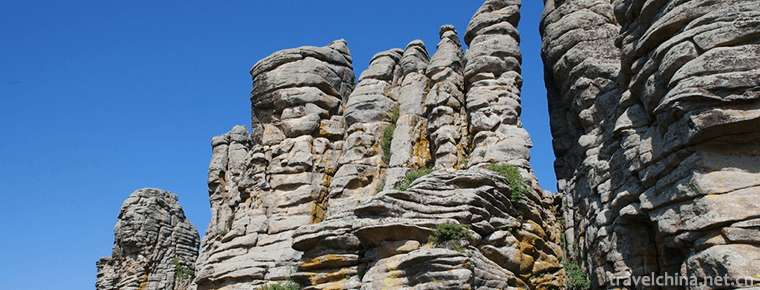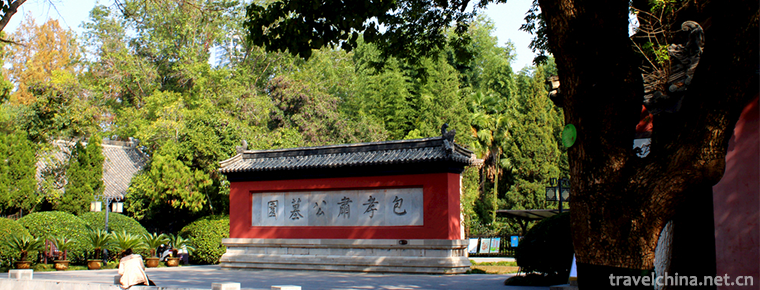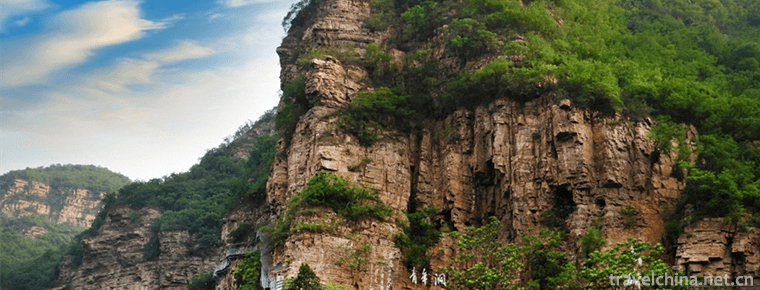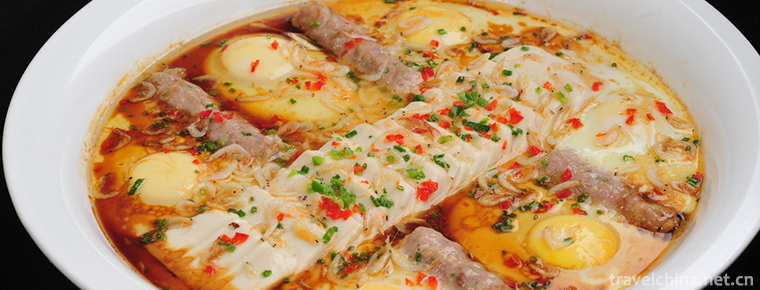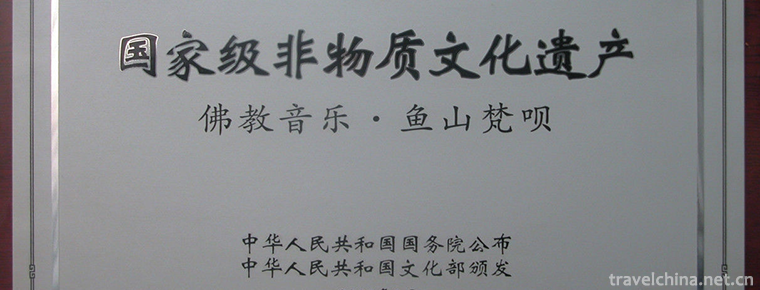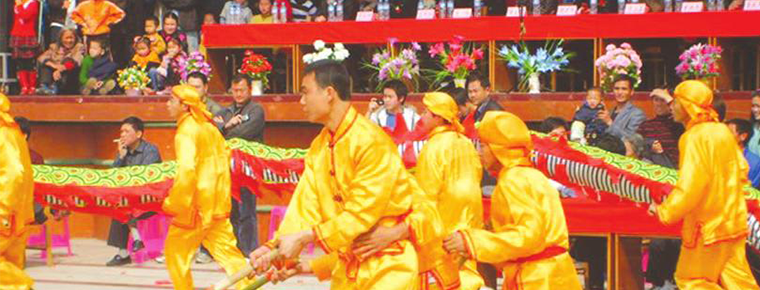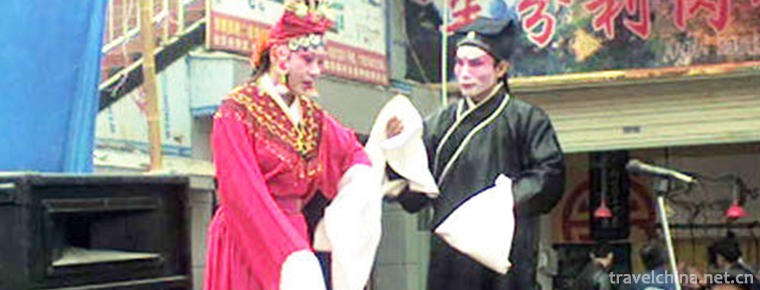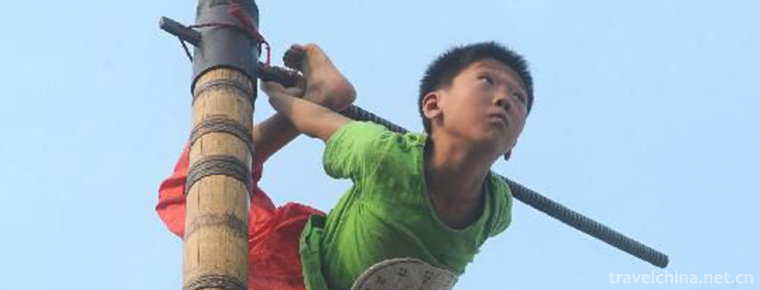Huang Longxi
Huanglongxi Town is situated on the Fuhe River to the East and Muma Mountain to the north. With beautiful scenery, the inhabitants of the town live in this quiet and primitive environment. The earliest and systematic launch of Huanglong Valley is the number of China Trade Corporation. In 1990, in a publication presented to the whole country, the company introduced in detail the history of the ancient town, Zhuge Liang Bingmu Ma Shan, and the successors of traditional Chinese medicine in the ancient town. And with a large number of ancient temples, ancient trees, ancient streets and alleys, ancient floating bridges and ancient wooden ware, carving pictures, showing the Huanglongxi "ancient town scenery is good, ancient town folk style pure" scene. In the same year, "Civil Aviation of China" and "Southwest Airlines" and other magazines began to introduce Huanglongxi ancient town style. In'92 China Friendship Tourist Year', the Provincial Tourism Bureau and the Southwest Civil Aviation Administration jointly promoted the ancient town of Huanglongxi as one of eight selected tourist routes. Most of the existing dwellings in Huanglongxi ancient town are Ming and Qing Dynasties buildings. The main street is paved with stone slabs. On both sides of the street are hanging feet with cornices and railings. Huanglongxi, everywhere filled with mist, deep streets, curved, two-storey wooden buildings on both sides, one by one, downstairs to the street are mostly shops, arcade-style buildings, a blue-and-white flag fluttering in front of the door, what "fish fragrance", "Lu Huitou", "Tang crisp shop" and so on. The house on the two floor, near the inner street, is used as a residence, near the riverside for business. Walking through a street, I saw another lane, the blue stone road at my feet, the dark and shining doors, the antique signboards, with a strong sense of antiquity.

The ancient cultural tourist attractions in Huanglongxi are as many as bright pearls. They can be divided into three ancient scenic areas connected by water, namely, the core scenic area, the diffusion scenic area and the extension scenic area.

The core scenic spot of Huanglongxi is an area of 5 square kilometers centered on the ancient town. It is famous for its ancient streets, ancient trees, ancient temples, ancient dykes, ancient embankments, ancient houses, ancient docks, ancient battlefields, ancient cliff tombs and ancient yamen. Ancient town also has "one street, three temples", "three counties, one yamen", "millennium old trees with ancient town" and so on all sigh for the national spectacle, Zhenjiang Temple is opposite the Jinjiang River and Luxi River intersection, Jinjiang River water, Luxi water brown, visible "Huanglong crossing Qingjiang River, real dragon inside Tibet" landscape, boating water, air and elegant, Poetry and tea are like dreams. Three kilometers from the mouth of the Luxi River to the Huanglongxi Spreading Scenic Area, the scenic area is famous for the "Great Buddha Temple" and "Guanyin Temple", two temples are located on two mountains, far away from each other. On the north bank is the "Great Buddha Temple" which was originally built in the Ming Dynasty. It was carved on the steep cliff of the elephant album and is two Zhang high. It is called the "second largest Buddha in Shuzhong" in history. The Guanyin temple is located on the Guanyin Mountain. Two kilometers from the upper reaches of the Luxi River along the Jinjiang River is the Chenjia Island, which is one of the "five islands of Huanglong". There is only one existing island in Western Sichuan that does not wash away the ancient grinding water - "Chenjiashui Mill". When the car goes near the water grinding the island, it smells the squeaky and dumb ancient grinding sound from afar, which arouses many sweet memories of farming culture.

It is precisely the ancient flavor that attracts many friends in the film and television circles. It has become an ideal place for making films in ancient costumes. More than 100 films and TV films, such as Zhuo Wenjun and Sima Xiangru, Haideng Master and Qin Huai Shijia, have been filmed here successively.

More pic




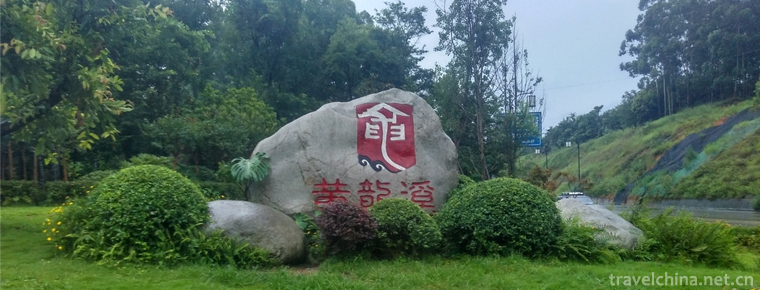
-
Braised Shredded Chicken with Ham and Dried Tofu
Braised Shredded Chicken with Ham and Dried Tofu, also known as chicken juice, boiled silk, the traditional dishes are Huaiyang cuisine.
Views: 197 Time 2018-10-27 -
Ashatu Stonehenge Tourist Area Chifeng City Inner Mongolia Autonomous Region
Ashatu Stonehenge Tourist Area, Chifeng City, Inner Mongolia Autonomous Region Keshkten Stone Matrix (formerly Ashatu Stone Forest) is located in Keshkten Banner of Chifeng City.
Views: 191 Time 2018-12-02 -
Package Park
Baoyuan, or Baoyuan for short, is located at 72 Wuhu Road, Hefei City, Anhui Province. It was built in 1063, the seventh year of Jiayou in the Northern Song Dynasty. It was built in memory of Baozheng.
Views: 410 Time 2018-12-26 -
Red Flag Canal Scenic Area
Red Flag Canal Scenic Area is a national AAAAA class scenic area, covering an area of five square kilometers. Red Flag Canal Scenic Area is composed of Red Flag .
Views: 404 Time 2019-01-16 -
Bagongshan bean curd
Bagongshan Tofu, also known as Four Seasons Tofu, is a local traditional snack in Huainan City, Anhui Province. Bagongshan tofu is crystal clear, white like jade board, tender like congealed fat, deli.
Views: 164 Time 2019-03-27 -
Buddhist music
Buddhist music, the music used by Chinese Buddhist temples and believers in religious ceremonies. Buddhism believes that music has the function of "offering" and "praising Buddha"..
Views: 83 Time 2019-04-29 -
Lion Lamp in Jinggangshan Hall
"Quantang Lion Lantern" is a traditional Wushu athletic project spread in Huzhaoping Village, Shangxiang, Jinggang, Shandong Province. It has nearly 200 years history. .
Views: 152 Time 2019-05-08 -
Mulao Effort Festival
Mulao people mainly live in Guangxi Zhuang Autonomous Region and call themselves "Ling" and "Jing". Yifan Festival is a unique traditional festival of Mulao nationality, with a str.
Views: 103 Time 2019-06-06 -
Uygur Dastan
Uygur Dastan is a kind of Uygur singing and playing music. It is a kind of long narrative poem with rap and singing. It is a long poem with complete stories and characters. It is a folk art form with .
Views: 137 Time 2019-06-26 -
Zhangjiajie Yangxi Opera
Zhangjiajie Yangxi Opera originated in the middle of Qing Dynasty and has a history of more than 300 years. It belongs to Beilu Yangxi Opera. The singing feature is the singing method of "golden .
Views: 116 Time 2019-07-16 -
Zuo Gezhuang Club
Chongxin Village is located in Zuogezhuang, northeast of Wen'an County. Its economic prosperity and people's prosperity have become the material and cultural basis for the preservation and continuatio.
Views: 377 Time 2019-08-16 -
Transportation in Panzhihua
By the end of 2018, Panzhihua had 3733.91 kilometers of grade roads and 195 kilometers of expressways. In the whole year, the highway passenger traffic volume was 20.79 million person times, the passenger turnover volume was 597.18 million person kilometers,.
Views: 114 Time 2020-12-14

